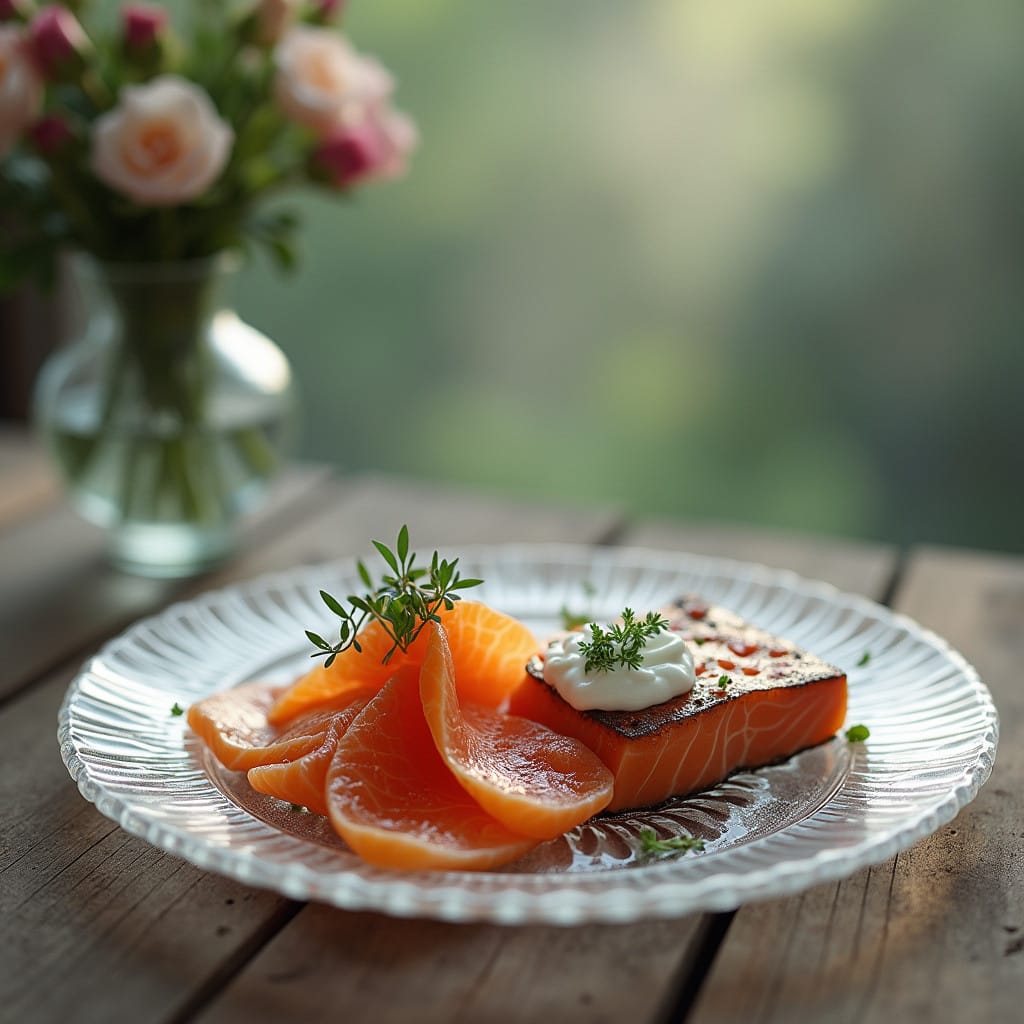Table of Contents
Smoked salmon is a culinary delicacy enjoyed worldwide, prized for its rich flavor and delicate texture. However, not all smoked salmon is created equal, and a common question arises among food enthusiasts: smoked salmon vs hot smoked salmon — what’s the difference? This guide will help you navigate the nuances between these two types of smoked salmon, ensuring you can make the best choice for your palate and culinary needs.
What is Smoked Salmon?
Smoked salmon is a term that encompasses several types of cured and smoked salmon products. It involves curing fresh salmon with salt and sometimes sugar, followed by a smoking process. The primary variations within smoked salmon depend on the method of smoking—cold smoking and hot smoking—and the results they yield. Let’s break it down to understand better.
Cold Smoked Salmon
Cold smoked salmon is smoked at low temperatures, typically between 68°F and 86°F (20°C and 30°C). The process preserves the salmon’s silky texture and imparts a subtle smoky flavor. Commonly served in thin slices, cold smoked salmon pairs perfectly with bagels, cream cheese, and capers.
Hot Smoked Salmon
Hot smoked salmon, on the other hand, is smoked at higher temperatures, usually between 120°F and 180°F (49°C and 82°C). This process cooks the fish fully, resulting in a flaky texture and a stronger smoky flavor. Hot smoked salmon is often served in chunks or fillets and can be enjoyed on its own or incorporated into recipes.
Differences Between Smoked Salmon and Hot Smoked Salmon
To truly understand smoked salmon vs hot smoked salmon, it’s essential to dive deeper into the key distinctions. These differences lie in preparation methods, texture, flavor profiles, nutritional content, and culinary uses.
Preparation Methods
- Cold Smoked Salmon: The salmon is cured with salt, then smoked at a low temperature. This method does not cook the fish but instead imparts a smoky aroma.
- Hot Smoked Salmon: The fish is also cured but smoked at a higher temperature, cooking it thoroughly.
Texture
- Cold Smoked Salmon: Maintains a soft, silky, and delicate texture. It resembles raw fish in appearance.
- Hot Smoked Salmon: Has a firm and flaky texture, similar to baked or grilled salmon.
Flavor Profiles
- Cold Smoked Salmon: Offers a mild and subtle smoky flavor with a slightly salty taste.
- Hot Smoked Salmon: Delivers a robust smoky flavor and a richer, heartier taste.
Nutritional Content
Both types of smoked salmon are rich in protein, omega-3 fatty acids, and essential nutrients. However, hot smoked salmon may retain fewer nutrients due to the higher smoking temperatures.
Culinary Uses
- Cold Smoked Salmon: Best enjoyed raw in thin slices, as a topping for bagels or canapés, or as a component in sushi rolls.
- Hot Smoked Salmon: Ideal for incorporating into salads, pastas, quiches, and other cooked dishes.
Health Benefits of Smoked Salmon
Whether you prefer cold or hot smoked salmon, both offer numerous health benefits:
- Rich in Omega-3 Fatty Acids: Both types of smoked salmon provide essential omega-3 fatty acids, which support heart health and brain function.
- High Protein Content: Smoked salmon is an excellent source of lean protein, aiding muscle growth and repair.
- Essential Nutrients: It’s packed with vitamins like B12 and D, as well as minerals such as selenium and phosphorus.
When comparing smoked salmon vs hot smoked salmon, it’s worth noting that cold smoked salmon may retain slightly more nutrients due to the lower smoking temperatures.
Culinary Pairings: Smoked Salmon vs Hot Smoked Salmon
When it comes to pairing smoked salmon with other foods, your choice between cold and hot smoked salmon matters:
- Cold Smoked Salmon: Works well with fresh ingredients like avocado, cucumbers, and dill. It’s also a star in creamy dishes like salmon mousse.
- Hot Smoked Salmon: Pairs beautifully with robust flavors such as roasted vegetables, whole grains, and tangy dressings.
How to Choose Between Smoked Salmon and Hot Smoked Salmon
When deciding between smoked salmon vs hot smoked salmon, consider the following factors:
Texture Preference
If you enjoy silky and delicate textures, cold smoked salmon is the way to go. If you prefer a firm, cooked texture, opt for hot smoked salmon.
Intended Use
Consider how you plan to use the salmon. For raw dishes, cold smoked salmon is ideal. For cooked recipes, hot smoked salmon is a better fit.
Flavor Intensity
Those who enjoy a mild smoky flavor may prefer cold smoked salmon, while fans of bold, smoky tastes will likely favor hot smoked salmon.
Frequently Asked Questions
Is Cold Smoked Salmon Safe to Eat?
Yes, cold smoked salmon is safe to eat when prepared and stored correctly. It’s important to buy from reputable sources to ensure quality.
Can You Substitute Cold Smoked Salmon with Hot Smoked Salmon?
While they’re not identical, you can substitute them in certain recipes. Keep in mind the difference in texture and flavor.
Which is Healthier: Cold Smoked or Hot Smoked Salmon?
Both are healthy choices, but the nutrient content can vary slightly due to the smoking process. Cold smoked salmon may retain more omega-3s, while hot smoked salmon offers a cooked alternative.
For more insights on seafood and culinary tips, check out Custom Chef.
Final Thoughts
The debate between smoked salmon vs hot smoked salmon ultimately comes down to personal preference and intended use. Both offer unique textures, flavors, and culinary versatility, making them valuable additions to any meal.
To learn more about smoked salmon and other gourmet options, visit Custom Chef. Enhance your culinary experience with expert tips and high-quality products. Whether you choose cold smoked or hot smoked salmon, you’re sure to enjoy a delightful taste sensation.
Explore the finest smoked salmon varieties today by visiting Custom Chef. Your journey into the world of smoked salmon begins here!

